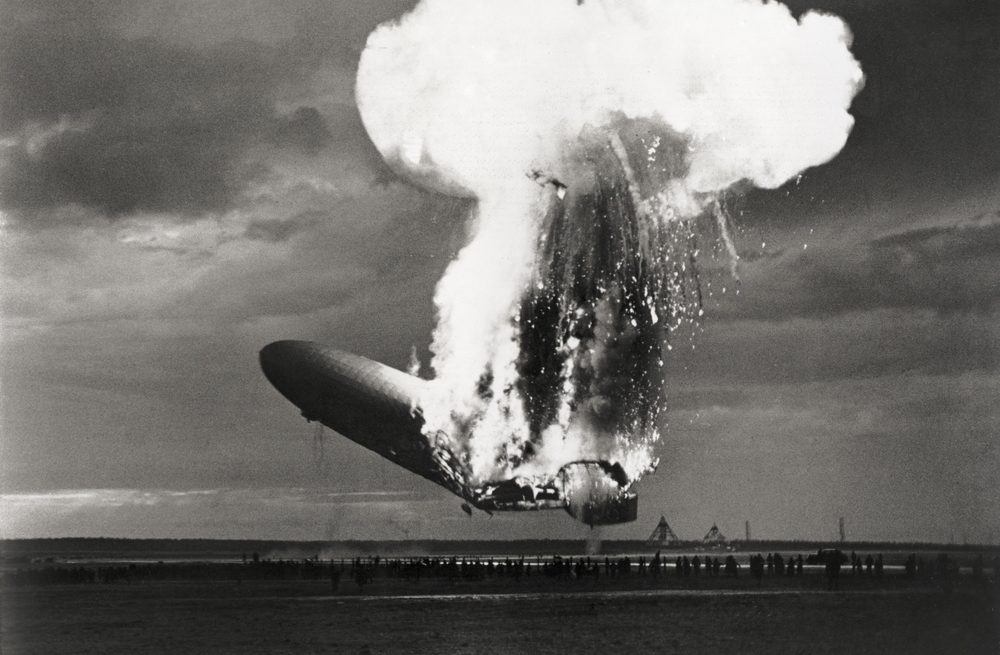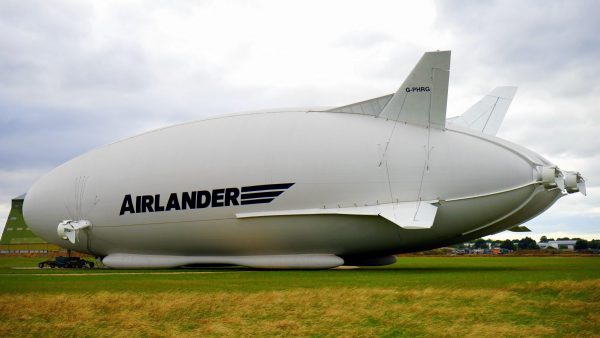

The Hindenburg Disaster: Hydrogen versus Helium
“Oh, the humanity!”
May 6, 1937 — the day that went down in history as the horrific Hindenburg disaster. Eighty-two years ago, in Lakehurst, New Jersey, an airship called the Hindenburg began its descent post transatlantic flight from Frankfurt, Germany. Carrying 36 passengers and 61 crew members, the Hydrogen-filled airship incinerated within seconds in its attempt to tether up. The fatalities included one ground crew member, 21 ship crew members, and 13 passengers. Each of the remaining survivors had jumped shipped and suffered significant injuries, as well as many civilians on the ground.
In his distress, Herb Morrison, the NBC radio broadcaster on assignment famously yelled, “Oh, the humanity!” as he watched the airship plummet 200 feet and burn up. There was no explanation for the catastrophe, other than the possibility of a tiny spark lighting up the highly-flammable hydrogen balloon. This scene quickly became an iconic image in history – made even more famous when it was used as Led Zeppelin’s debut album cover.

Airships: A Brief History
Zeppelins, airships, dirigibles – all are names for what we call in the modern day, blimps. A Frenchman by the name of Henri Giffard designed the first successful airship in 1852, but it was the Germans who improved the design by building cigar-shaped airships with lighter metal frames and inflating them with hydrogen. Count Ferdinand Von Zeppelin is the inventor of the first rigid airship, where we get the name from. In the 1930s, German zeppelins began to float their way across the Atlantic Ocean as the first transatlantic air services for passengers. In addition to control rooms for the crew, airships like the Hindenburg were designed with fully functioning sleeping quarters, libraries, dining rooms and lounges.
Airship production began in the United States after Goodyear Tire and Rubber Company purchased a plot of land near Akron, Ohio. What began as a way to advertise their products and services was later recruited for use by the US military for WWI and WWII. They acted as the first drones – providing surveillance of enemy territory to drop bombs.
Hydrogen vs. Helium
Carrying explosive devices on a hydrogen-filled balloon is certainly problematic, and there are a famous number of airship accidents. Whether they crashed into trees or experienced an engine fire, hydrogen was not the wisest decision. As we learned from the Hindenburg disaster, hydrogen is highly flammable, whereas helium is not. The fabric surrounding the body of the airships was incompatible with the risks of a flammable gas, which before was assumed to be safe. Though the probability of something as tiny as a spark catching flame was extremely low, the Hindenburg disaster made manufacturers more cautious.
The logic of the first inventors of blimps was to use hydrogen as the lifting gas because it is the most abundant gas in the universe, and it is the lightest in the universe. Helium takes second place in both of these categories. While helium is 1/8 the density of air, hydrogen is 1/16 the density of air. Today, along with rudder and engine systems, blimps are filled with much safer helium gas, which is not flammable at all.
How Airships Work Today
We still see Goodyear blimps hovering above stadiums that broadcast sporting events today, but airships are coming back around for a diverse range of uses, including tourism. Similar to the first transatlantic flights it was used for in the early 20th century, airship manufacturers have plans to take passengers on luxury cruises amongst the clouds. This time, of course, on airships elevated with helium.
Airships are also being used to lift and transport heavy cargo such as oil rigs, ships, and tanks. Another interesting use is for research purposes including monitoring whale migration. There is a large possibility that we will be seeing them more and more.

Helium and Hydrogen Distributor of the Rocky Mountains
Rocky Mountain Air Solutions is a distributor of both hydrogen and helium gases in gaseous and liquid form. Today hydrogen is sold for the purpose of processing petroleum products, glass production, and heat-treating furnaces for steel production. Its uses lean toward chemical processes rather than as a lift gas.
We also sell helium for its miraculous ability to superconduct magnets in MRI machines, to fill party balloons, and as a safe lift gas option for blimps today.
If you are interested in partnering with us for you hydrogen or helium applications, please contact your local branch in any one of our five states (Colorado, Utah, Wyoming, Nebraska, Idaho). We look forward to serving you.



